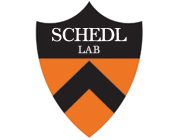The hedgehog pathway gene shifted functions together with the hmgcr-dependent isoprenoid biosynthetic pathway to orchestrate germ cell migration.
Publication Year
2013
Type
Journal Article
Abstract
The Drosophila embryonic gonad is assembled from two distinct cell types, the Primordial Germ Cells (PGCs) and the Somatic Gonadal Precursor cells (SGPs). The PGCs form at the posterior of blastoderm stage embryos and are subsequently carried inside the embryo during gastrulation. To reach the SGPs, the PGCs must traverse the midgut wall and then migrate through the mesoderm. A combination of local repulsive cues and attractive signals emanating from the SGPs guide migration. We have investigated the role of the hedgehog (hh) pathway gene shifted (shf) in directing PGC migration. shf encodes a secreted protein that facilitates the long distance transmission of Hh through the proteoglycan matrix after it is released from basolateral membranes of Hh expressing cells in the wing imaginal disc. shf is expressed in the gonadal mesoderm, and loss- and gain-of-function experiments demonstrate that it is required for PGC migration. Previous studies have established that the hmgcr-dependent isoprenoid biosynthetic pathway plays a pivotal role in generating the PGC attractant both by the SGPs and by other tissues when hmgcr is ectopically expressed. We show that production of this PGC attractant depends upon shf as well as a second hh pathway gene gγ1. Further linking the PGC attractant to Hh, we present evidence indicating that ectopic expression of hmgcr in the nervous system promotes the release/transmission of the Hh ligand from these cells into and through the underlying mesodermal cell layer, where Hh can contact migrating PGCs. Finally, potentiation of Hh by hmgcr appears to depend upon cholesterol modification.
Keywords
Animals,
signal transduction,
Protein Binding,
Gene Expression Regulation, Developmental,
Embryo, Nonmammalian,
Cell Movement,
Hedgehog Proteins,
Drosophila melanogaster,
Gonads,
Drosophila Proteins,
Germ Cells,
High Mobility Group Proteins,
Blastoderm,
Wings, Animal,
Terpenes,
GTP-Binding Protein gamma Subunits,
GTP-Binding Proteins,
Intercellular Signaling Peptides and Proteins
Journal
PLoS Genet
Volume
9
Issue
9
Pages
e1003720
ISSN Number
1553-7404
Alternate Journal
PLoS Genet.
PMID
24068944

